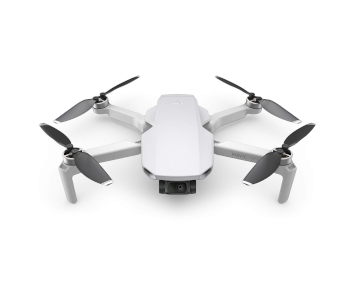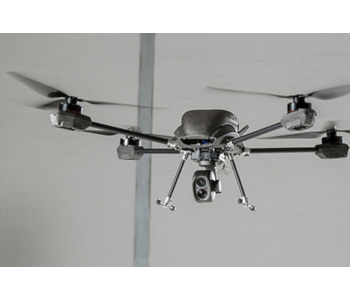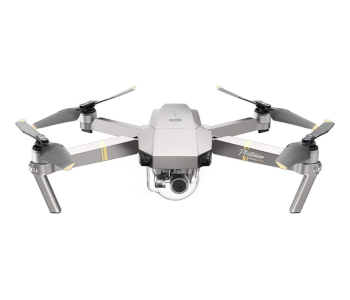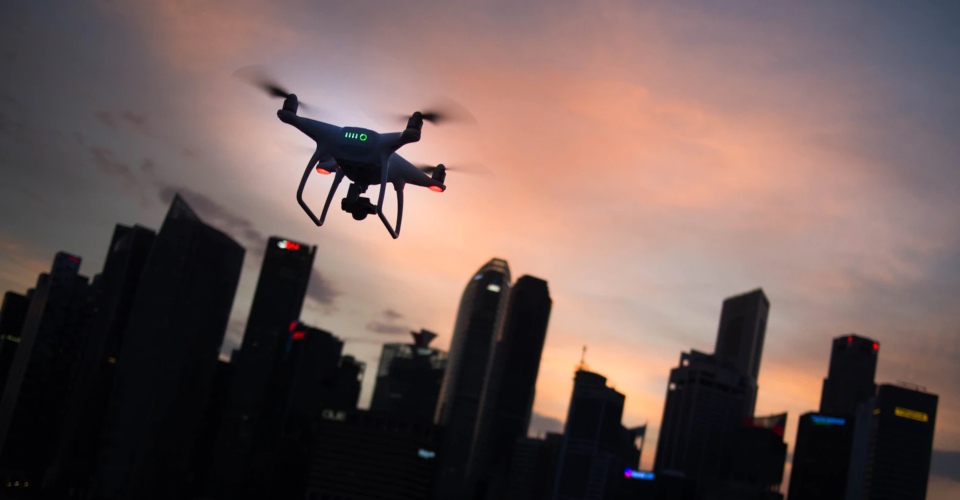Drone Noise Levels and How to Keep Them Quiet
There are many things about drones that bother people, especially those who are not into the hobby. They can be used to take pictures without permission, they can fly right above private property, and they are incessantly noisy. The buzzing sound that a drone emits makes it the focus of attention whenever and wherever it flies overhead. This can be a real buzz-killer if you’ve ever seen a drone cover a wedding or a party.
Weddings aside, there are several situations when a drone can benefit from being just a little quieter. What makes drones so noisy anyway, and what are the major drone brands doing to help them make them quieter? What can you do to reduce the noise of your drone?
Why are drones so noisy?

Drones are basically miniature helicopters, so hardly anyone is surprised that they make so much noise. Most of the noise is created because of the redirection of the air as the propellers spin, which generates lift and propulsion. Drones with more propellers are noisier, as are drones that need to lift heavy payloads.
To put it simpler terms, think of propellers are physically beating the air when they spin. The more disturbance the propellers create, the more noise is generated to create lift. Since drone propellers are smaller than the propellers of a helicopter, they need to spin much faster. This creates the characteristic high-pitched whirring sound of drones.
The noise of drones isn’t just a nuisance – it hampers many of a drone’s possible applications. For instance, a noisy drone would a poor surveillance tool no matter how small and maneuverable it is. When used as a monitoring and tracking tool for wildlife, drones also have to be kept a good distance away so that they don’t scare animals and disrupt their natural behaviors.
For years, the concept of parcel delivery by an autonomous fleet of drones has been explored and tested by major retail brands. Aside from the safety concerns of having potentially hundreds of drones flying over people and private property, the noise that drones generate has also kept this concept from manifesting into reality.
Can you even imagine the noise that hundreds of parcel delivery drones can generate? As we’ve said, making the drones carry heavy packages will further increase their noise on account of faster propellers speeds needed to generate more lift.
For this reason, noise reduction has been one of the frontiers of drone development technology. There has been some success at this front, fortunately, but the industry is still far from achieving the acceptable level of noise.
How noisy are drones exactly?
To put a more qualitative perspective on drone noise, let’s look at some scientific studies. To serve as a reference value, a noise level of 85 dB is recognized as the value for the acceptable noise level. This is close to the level of noise of a highway at close range (80 dB) but is still quieter than the sound of a jackhammer at close range (100 dB). Close-range conservations can range in volume from 40 dB to 50 dB.
Available data on drone noise levels are all over the place, in that many of the attempts to measure them make no attempt to established controlled variables. There also has not been any concerted effort to document the noise of a huge set of different drone models at various conditions. In any case, we’ll work with what we have.
According to a study comparing different unidentified drones, their noise levels at a distance of 100 AGL are as follows:
- Small fixed-wing drone – 50 dB
- Large quadcopter – 55 dB
- Fixed-wing aircraft – 75 dB
- Manned helicopter – 95 dB
Moreover, a comparison of the different DJI drone models yielded the following numbers:
- Mavic Pro – 79 dB
- Mavic Pro Platinum – 70 dB
- Mavic Air – 76 dB
- Spark – 74 dB
- Mavic Mini – 74 dB
- Phantom 4 Pro – 81 dB
- Phantom 4 Pro V2 – 76.5 dB
Again, it’s tough to come up with concrete conclusions from these values as we’re not certain about the parameters under which they are measured. Just from the quick comparison of the noise levels of DJI drones, it’s easy to see how the larger and heavier Phantom 4 Pro drones are noisier compared to the compact Mavic drones.
The huge decrease in noise from the original Mavic Pro to the Platinum version can be credited to more efficient propellers and a redesigned Electronic Speed Controller (ESC). This is considered a huge design leap for the DJI brand which carried over to their later drone models.
In any case, the level of detection of the noise that a drone generates is determined according to the setting. For urban settings, the ambient noise can reach about 65 dB during daytime and 55 dB at night. Rural areas are much quieter, with ambient noise levels of around 45 dB during the day and as low as 35 dB at night. If the noise of a drone goes beyond these ambient noise levels, then they can be detected or perceived by humans and wildlife.
We must also recognize the phenomenon at noise attenuation with distance. Simply put, the noise of a drone decreases the farther away it is. As a general rule, noise levels decrease by 6 dB every time the distance between the source and the listener doubles.
What are drone manufacturers doing to reduce noise?
• Propeller redesign

The concept of “air disturbance” is key to achieving lower noise levels in drones. The harder that a drone’s propellers need to “beat” on the wind to generate lift, the more noise they generate. Thus, the easiest strategy has been to design larger propellers that can generate the same amount of lift at lower rpm speeds.
So-called “slow fly” propellers are also beneficial in terms of battery efficiency, as less of the output power of the rotor motors gets wasted in the form of excess vibration and noise. By making the switch to wide-diameter propellers, one can increase flight time per battery cycle for a few minutes.
The same concept of reducing air disturbance can be achieved by designing propellers with more aerodynamic profiles or by using lightweight and more rigid materials. However, the benefits in noise reduction of changing the shape and material of propellers are not as pronounced compared to changing propeller size.
An excellent example of this concept manifested into reality is the Vanguard Long-Range Surveillance Drone. Using specially designed wide-diameter tri-blades that generate enough lift despite slow rpm speeds, the Vanguard drone remains undetectable at a distance of 150 meters. This also contributes to impressive efficiency that allows the drone to fly up to 94 minutes on a single battery cycle.
This propeller redesign does not come with drawbacks. Increasing the diameter of the propellers also makes them heavier, which means that they carry more momentum. This increased momentum can make it more difficult for a drone to make sudden changes in speed and direction, thus making them less maneuverable. This can be problematic if you’re into drone racing or if you fly your drone near obstacles.
• ESC redesign

As we’ve gleaned upon earlier, DJI was able to make the Mavic Pro Platinum much quieter than the original Mavic Pro by doing a tandem redesign of both the propellers and the Electronic Speed Controller (ESC). The ESC of a drone is basically an electronic module that determines which part of the propeller motor (a brushless AC motor) is powered.
By passing the signal from one section of the stator to the next, the ESC influences the speed at which the motors (and consequently, the propellers) rotate. In old ESC designs, this signal is delivered in a step-wise manner – one electrical coil is powered then shut off, while the signal is passed to the next electrical coil.
The ESC redesign made use of a sinusoidal current, which meant that the current in one coil is tapered down while it builds up on the next coil. This results in smoother rotation of the propellers, and thus a less disruptive action of the propellers.
In the same way that larger propellers are more efficient, the redesigned ESC has also resulted in an upgrade in battery efficiency. The shift to a sinusoidal ESC has proven to be successful for DJI and has been carried over to their later drones.
Final thoughts
Just the mere fact that a drone is often described as “buzzing by” is a testament to how characteristically noisy it is. Although it’s something that drone pilots have gotten used to, the general public doesn’t take as kindly to it. There’s nothing quite like the high-pitched buzz of a drone to disrupt the solemnity of wedding vows or the tension of a major sports event.
The thing about the noise of drones is that it’s never going to go away. There may be ways to reduce this noise, but we’re likely not ever going to see drones that are completely quiet. This means that drone pilots will just have to skirt around the issue, keeping their drones a respectful distance away so that they don’t up bothering people with all that noise.

